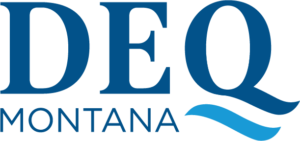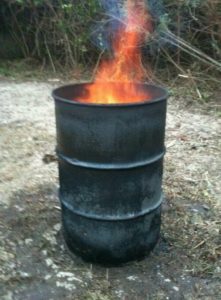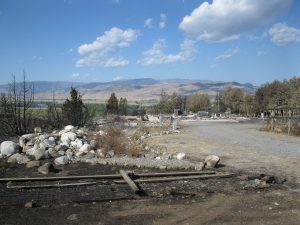Current Open Burning Status
As of October 17, 2024
| Agency | Open Burning Status | Notes |
| Amsterdam Fire District | Open | |
| Big Sky Fire Department (406) 995-2100 | Open | |
| Bozeman Fire Department (406) 582-2350 | Open | |
| Bridger Canyon Fire District (406) 586-6427 | Open | |
| Central Valley Fire District (406) 388-4480 | Open | |
| Clarkston Fire Service Area | Closed | |
| County Fire (unprotected) (406) 548-0111 | Open | |
| Fort Ellis Fire Service Area (406) 587-0236 | Open | |
| Gallatin Gateway Fire District (406) 763-4318 | Open | |
| Gallatin River Ranch Fire District | Closed | |
| Hebgen Basin Fire District (406) 646-9073 | Open | |
| Hyalite Fire Department (406) 586-3770 | Open | |
| Manhattan Fire District (406) 284-6224 | Open | |
| Sedan Fire District | Open | |
| Three Forks Fire Department | Open | |
| Willow Creek Fire District | Open | |
| Yellowstone Mountain Club Fire District (406) 993-2285 | Closed |
Current Activated Burn Permits
Who is my Fire Department?
Burn Permits

Gallatin County utilizes a burn permit system to indicate when it is not safe to burn and minimize false alarms by knowing where people are conducting controlled burns. Burn permits can be obtained online at www.gallatinburnpermits.com or in person at the following locations and activated each day you burn:
- Bozeman Fire Department, 300 East Oak in Bozeman
- Central Valley Fire District, 215 Wings Way in Belgrade
- Gallatin County Treasurer’s Office, 311 West Main, Room 103 in Bozeman
- Three Forks Library, 607 North Main in Three Forks
**The following information is for unincorporated areas of Gallatin County. Incorporated cities may have their own regulations that vary.**
When Can I Burn?
Open burning is allowed by Gallatin County Burn Permit between March 1st and November 30 of each year. During this time frame burn permits are required. When conditions are not favorable for burning, the fire chief of your fire protection agency may shut down open burning to reduce the potential for a fire to get out of control. In extreme conditions a burn ban may be implemented restricting all open flames. Gallatin County does not utilize the Stage 1 and Stage 2 Fire Restriction system. Instead, either burning is open or closed (we find this easier to understand) and in very rare situations the County Commission may institute a complete burn ban.
Hazard Reduction Agreements?
Hazard Reduction Agreements fall under a different portion of the law and allow organizations with an HRA to conduct burning outside of the burn permit requirements. However, those conducting a controlled burn under an HRA must still notify Gallatin County by purchasing a Hazard Reduction Agreement Notification at www.gallatinburnpermits.com.
Winter Burning
 Montana DEQ can permit burning during the winter (outside of the County Burn Permit Season) under a another section of law. Those wishing to conduct a burning project from December 1 to February 28 must complete the DEQ Winter Burning request form at least 24 hours beforehand on the DEQ Winter Burning Request Form. You will receive an email from DEQ indicating if your permit is approved and indicating the duration (up to 3 days) along with any other criteria. If approval is granted, you then must activate a purchased Gallatin County DEQ Notification permit each day at www.gallatinburnpermits.com.
Montana DEQ can permit burning during the winter (outside of the County Burn Permit Season) under a another section of law. Those wishing to conduct a burning project from December 1 to February 28 must complete the DEQ Winter Burning request form at least 24 hours beforehand on the DEQ Winter Burning Request Form. You will receive an email from DEQ indicating if your permit is approved and indicating the duration (up to 3 days) along with any other criteria. If approval is granted, you then must activate a purchased Gallatin County DEQ Notification permit each day at www.gallatinburnpermits.com.
More information on winter burning at: https://deq.mt.gov/air/Programs/burning
 What Can I Burn?
What Can I Burn?
Natural vegetation is allowed to be burned with a valid activated burn permit.
Are Burn Barrels Legal?
Burn Barrels by themselves are legal, however what people often burn in them is not legal. Burn permits are required for burning in a burn barrel.
What is Illegal to Burn?
These common items are illegal to burn at all times:
Styrofoam and other plastics
Animal droppings
Asbestos or asbestos-containing material
Treated lumber and timbers
Pathogenic wastes
Hazardous materials
Materials resulting from salvage operations
Chemicals
Asphalt shingles
Insulated wire
Oil and petroleum products
Standing or demolished structure
Wastes generating noxious odors
Poultry litter
Tires
Rubber material
Tar paper
View full list of prohibited items here.
What is a Recreational Fire?
A recreational fire is a fire ignited, set or burning in a nonflammable structure measuring less than 48 inches diameter and for which a reasonably prudent and suitable source of extinguishing the fire is available. Burn Permits are not needed for recreational fires. The key is that it is for recreational purposes and inside a structure such as a fire pit.
Safe Debris Burning
- Make sure you have a valid permit that is activated on the day you plan to burn. If conditions aren’t safe, you won’t be able to activate your permit.
- Check the weather for the day – don’t burn on dry, windy days. Conditions may change later in the day from when you start, making it hard to control the fire.
- Local fire officials can recommend a safe way for burning debris. It should be placed in a cleared area, away from overhead branches and wires.
- Debris should not be accumulated for several days and then ignited. It becomes compacted and wet, increasing the air pollution, and makes the fire burn longer, requiring more watching.
- Check local laws on burning debris. Cities may have specific regulations (see below). If your fire does get away, you may be liable for the damage and suppression costs.
- Consider the alternatives to burning. Some types of debris, such as leaves, grass, and stubble, may be of more value if they are not burned. Household trash should be hauled away to a recycling station.

